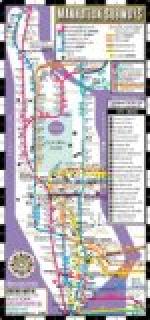To attain these speeds without exceeding maximum safe limiting speeds between stops, the equipment provided will accelerate trains carrying maximum load at a rate of 1.25 miles per hour per second in starting from stations on level track. To obtain the same acceleration by locomotives, a draw-bar pull of 44,000 pounds would be necessary—a pull equivalent to the maximum effect of six steam locomotives such as were used recently upon the Manhattan Elevated Railway in New York, and equivalent to the pull which can be exerted by two passenger locomotives of the latest Pennsylvania Railroad type. Two of these latter would weigh about 250 net tons. By the use of the multiple unit system of electrical control, equivalent results in respect to rate of acceleration and speed are attained, the total addition to train weight aggregating but 55 net tons.
If the locomotive principle of train operation were adopted, therefore, it is obvious that it would be necessary to employ a lower rate of acceleration for express trains. This could be attained without very material sacrifice of average speed, since the average distance between express stations is nearly two miles. In the case of local trains, however, which average nearly three stops per mile, no considerable reduction in the acceleration is possible without a material reduction in average speed. The weight of a local train exceeds the weight of five trail cars, similarly loaded, by 33 net tons, and equivalent adhesion and acceleration would require locomotives having not less than 80 net tons effective upon drivers.
[Sidenote: Switching]
The multiple unit system adopted possesses material advantages over a locomotive system in respect to switching at terminals. Some of the express trains in rush hours will comprise eight cars, but at certain times during the day and night when the number of people requiring transportation is less than during the morning and evening, and were locomotives used an enormous amount of switching, coupling and uncoupling would be involved by the comparative frequent changes of train lengths. In an eight-car multiple-unit express train, the first, third, fifth, sixth, and eighth cars will be motor cars, while the second, fourth, and seventh will be trail cars. An eight-car train can be reduced, therefore, to a six-car train by uncoupling two cars from either end, to a five-car train by uncoupling three cars from the rear end, or to a three-car train by uncoupling five cars from either end. In each case a motor car will remain at each end of the reduced train. In like manner, a five-car local train may be reduced to three cars, still leaving a motor car at each end by uncoupling two cars from either end, since in the normal five-car local train the first, third, and fifth cars will be motor cars.
[Illustration: 200 H. P. RAILWAY MOTOR]
[Sidenote: Motors]
The motors are of the direct current series type and are rated 200 horse power each. They have been especially designed for the subway service in line with specifications prepared by engineers of the Interborough Company, and will operate at an average effective potential of 570 volts. They are supplied by two manufacturers and differ in respect to important features of design and construction, but both are believed to be thoroughly adequate for the intended service.




